Top 10 Most Useful Plants At Home
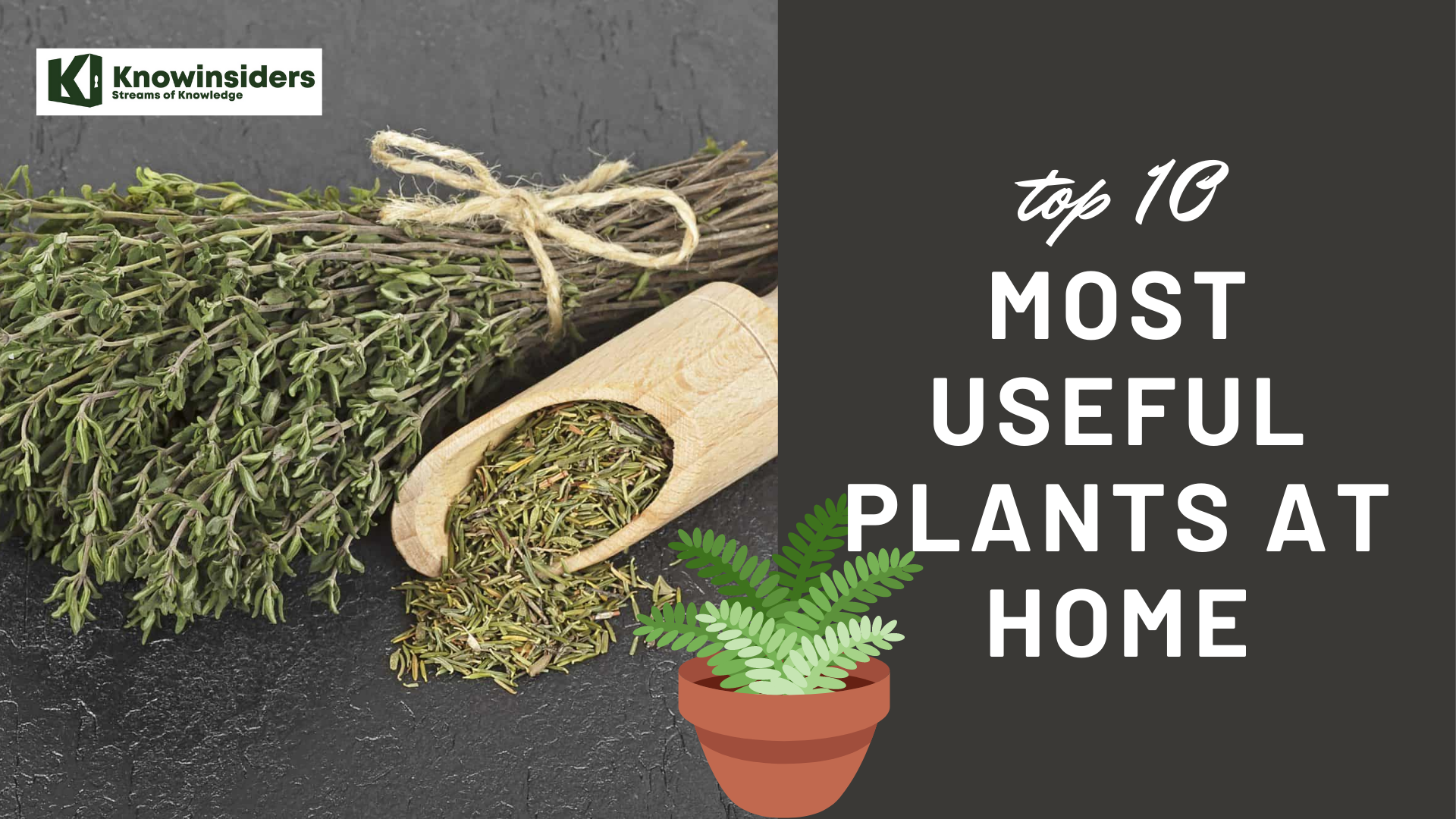 |
| Top 10 most useful plants at home |
There is nothing more satisfying than having agarden to serve as a beautiful corner with amazing and beneficial plants. The best part is that you don't have to be a trained gardener for cultivating these useful plants.
All you need is a sapling, and some basic knowledge about the plant and you are ready to give your family some amazing herbs. Here is the list of top 10 most useful plants at home, and some of them will surprise you for its wonderful benefits.
List of top 10 most useful plants at home
10. The Taste-buds pleasing - Piper betle
9. Bird’s Nest Fern
8. Spider Plant
7. The Seasoning Savory - Marjoram Marwa
6. Bryophyllum
5. Thyme
4. Monstera Deliciosa
3. Dracaena Gold Star
2. LemonGrass
1. Queen of Herbs - Krishna Tulsi Plant
Top 10 most useful plants at home in detail
10. The Taste-buds pleasing - Piper betle
 |
| Photo: Wikipedia |
The betel (Piper betle) is a vine of the family Piperaceae, which includes pepper and kava. Betel leaf is mostly consumed in Asia, and elsewhere in the world by some Asian emigrants, as betel quid or in paan, with areca nut and/or tobacco.
In India and Sri Lanka, a sheaf of betel leaves is traditionally offered as a mark of respect and auspicious beginnings in traditional Indian culture Occasions include greeting elders at wedding ceremonies, celebrating the New Year, and offering payment to physicians and astrologers (to whom money and/or areca nut, placed on top of the sheaf of leaves, are offered in thanks for blessings).
The betel plant is an evergreen, dioecious perennial, with glossy heart-shaped leaves and white catkin. The betel plant originated in Southern and Southeast Asia.
Approximately 85-90% of betel leaf is water, which means it has high moisture content and low calorie count. About 100 grams of betel leaves contain just 44 calories. It contains 0.4-1% fat and 3-3.5% protein, which makes it a low source of fat and moderate source of protein.
Furthermore, the betel leaf contains moderate amounts of essential nutrients such as iodine (3.4 mcg/ 100 grams), potassium (1.1-4.6%), vitamin A (1.9-2.9 mg/ 100 grams), vitamin B1 (13-70 mcg/ 100 grams), vitamin B2 (1.9-30 mcg/ 100 grams) and nicotinic acid (0.63-0.89 mg/ 100 grams).
BenefitsBesides these nutrients betel leaves contain essential oils and chemical components such as betel oil and chavicol, betelphenol, eugenol, terpene and campene. These chemical components possess medicinal properties and help in the treatment and management of various diseases and disorders. Benefits of Betel Leaves Anti-diabetic Agent Lowers High Cholesterol Levels Anti-cancer Agent Anti-microbial Agent Helps in Wound Healing Anti-asthmatic Agent Helps Overcome Depression Improves Oral Health |
9. Bird’s Nest Fern
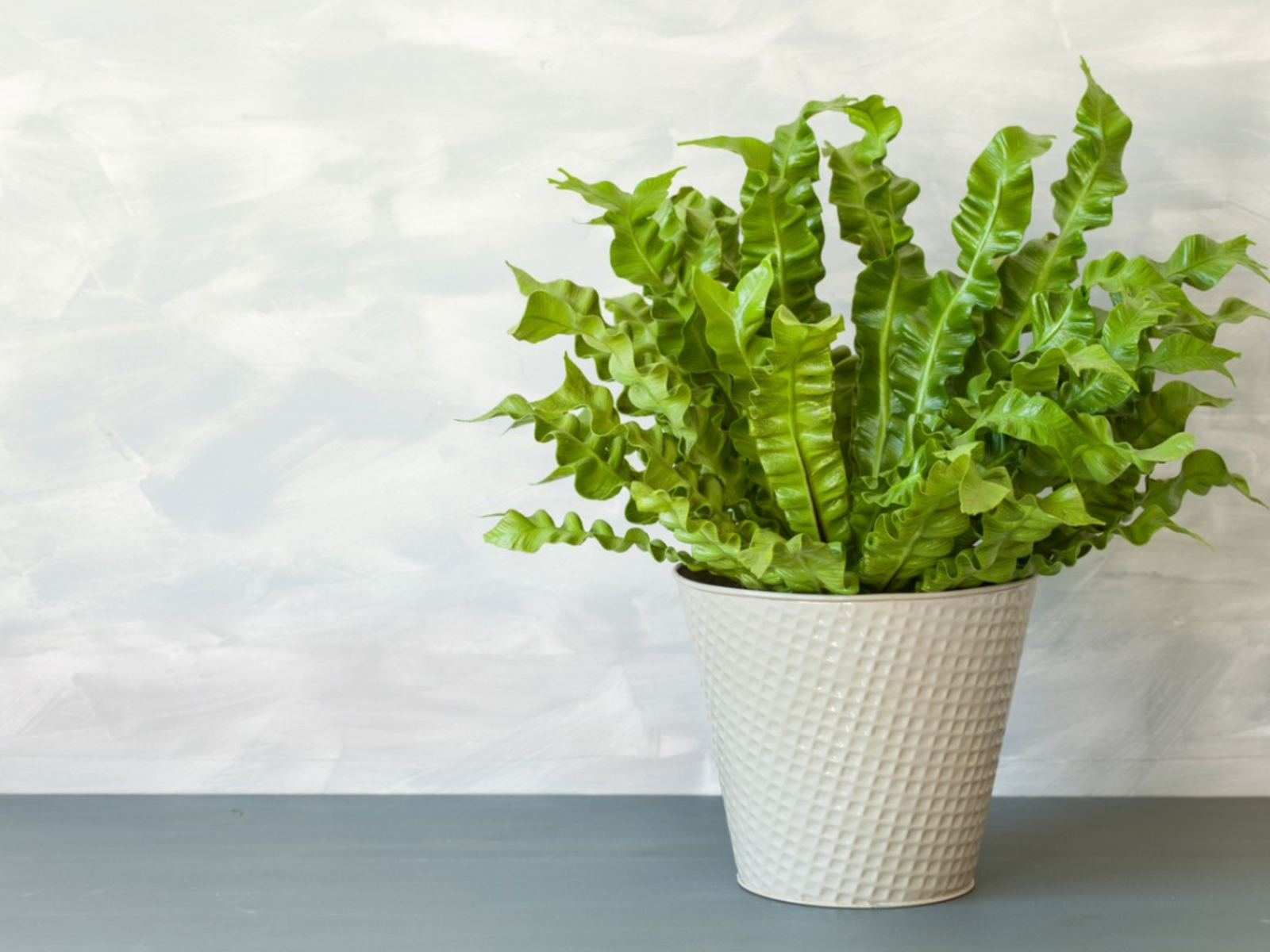 |
| Photo: Gardening Know How |
Bird's nest ferns (Asplenium nidus) are naturally epiphytic, meaning they grow on the surface of other plants. In their rainforest homes, they can be found growing high in the crooks of trees. They form a series of erect, spoon-shaped, bright green fronds that rise from a central rosette. Healthy plants can have fronds up to 5 feet long, but bird's nest ferns kept as houseplants typically have fronds that grow only about 2 feet long. These ferns have a slow growth rate. They're best planted in the spring, though houseplants generally can be started year-round.
The key to a healthy bird's nest fern is providing it with ample warmth, humidity, and moisture. When growing it as a houseplant, one of the best places to situate a bird's nest fern is near a shower or tub in a bathroom where it will receive optimal humidity and warmth, though it must have a light source as well.
New leaves will constantly emerge from the central area of the plant, which resembles a bird's nest. Do not touch, move, or handle the new, delicate fronds as they emerge from the center. They are extremely fragile, and if you touch them, there is a high chance of them becoming damaged or deformed.
BenefitsAsplenium (Birds Nest Fern) indoor air purifier Absorbs harmful gases. The large broad fronds of these plants are not only used for their medicinal properties and ornamental purposes but also having air purifying capacity. Absorbs HCHO (Formaldehyde) Improves indoor air quality and temperature. |
8. Spider Plant
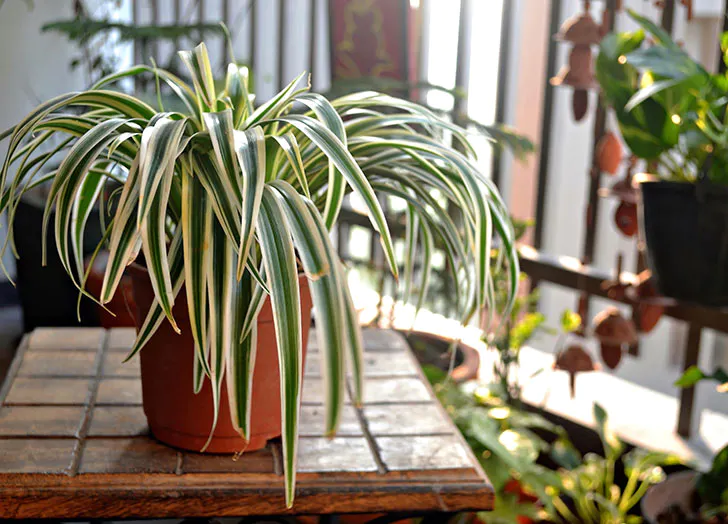 |
| Photo: PureWOW |
The spider plant (Chlorophytum comosum) is considered one of the most adaptable of houseplants and the easiest to grow. This plant can grow in a wide range of conditions and suffers from few problems, other than brown tips. The spider plant is so named because of its spider-like plants, or spiderettes, which dangle down from the mother plant like spiders on a web. Available in green or variegated varieties, these spiderettes often start out as small white flowers.
Caring for spider plants is easy. These tough plants tolerate lots of abuse, making them excellent candidates for newbie gardeners or those without a green thumb. Provide them with well-drained soil and bright, indirect light and they will flourish. Water them well but do not allow the plants to become too soggy, which can lead to root rot. In fact, spider plants prefer to dry out some between waterings.
BenefitsOne of the easiest indoor plants to maintain, the Spider Plant produces oxygen whilst purifying the air in your home and office by absorbing carbon monoxide, formaldehyde and xylene. Additionally, Spider Plants are non-toxic and are in fact edible, making them safe for pets and young children. When placed in office and home spaces Spider Plants can assist in fostering happy vibes, increasing productivity, decreasing stress and enriching overall well-being. |
7. The Seasoning Savory - Marjoram Marwa
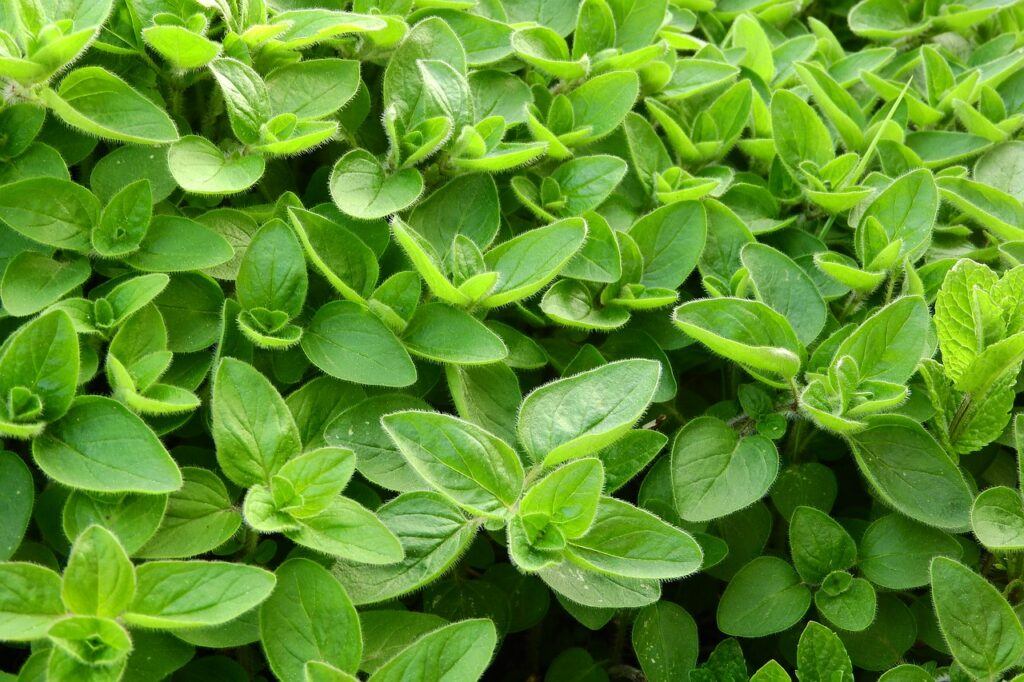 |
| Photo: Getty Images |
Marwa is the plant with the fragrant foliage. The Greeks called this plant Joy of the mountain and used it to make wreaths and garlands for weddings and funerals.
What makes it special:
Marjoram attracts bees and butterflies.
Marjoram is sufficiently attractive to make an excellent border planting for a garden.
This keeps its full flavor even when dried.
Origanum Majorana has thin, gray-green leaves and in early summer, small, white to pink flowers appear along the stem. The flavor of the leaves are similar to oregano, but sweeter.Sweet Marjoram (Origanum majorana) is easy to grow herb well suited for growing in containers as well as the garden.
Marjoram plants are tender perennials, freezing temperatures will cause serious injury or death to the plants.
Insufficient Evidence to Rate Effectiveness for...
Asthma. Early research shows that taking 2 drops of marjoram oil daily along with asthma medication for 3 months might improve lung function in people with asthma better than taking asthma medication alone.
Coughs.
Colds.
Runny nose.
Stomach cramps.
Colic.
Liver problems.
Gallstones.
Headache.
Diabetes.
Menopause symptoms.
Menstrual problems.
Nerve pain.
Muscle pain.
Sprains.
Promoting breast milk.
Improving appetite and digestion.
Improving sleep.
Other conditions.
6. Bryophyllum
 |
| Photo: Travaldo |
The most striking feature of this plant is what gave it the common name Mother of Thousands. If you see lots of little plants scattered around a window ledge Bryophyllum cannot be far. Tiny plantlets, miniatures of the mother plant, develop along the margins of the serrated leaves, where they sit perched like hordes of little children. They drop off easily and, after landing on soil, quickly develop roots and grow into independent plants. The leaves and stems of the plant are green and fleshy and are covered with a shiny layer of wax.
The entire plant is a huge water reservoir, the waxy layer preventing loss of water by evaporation. Bryophyllum therefore tolerates drought well. In fact its entire metabolism is adapted to drought.
During the day, when it is hot, the plant effectively holds its breath and thus protects itself from loss of water by evaporation. At night the plant then breathes, collecting the carbon dioxide in a form bound to malic acid. The following day it then uses this carbon dioxide to carry out photosynthesis. This special type of photosynthesis, which is found in many cacti and succulents, is known as crassulacean acid metabolism.
BenefitsIn the traditional medicine of tropical countries Bryophyllum juice is used internally for diarrhea and all kinds of fever. An ointment prepared from the expressed juice of the leaves mixed with oil or shea butter, is used externally for treatment of ulcers, abscesses, burns or poorly healing wounds. The ointment has hemostatic, anti-inflammatory and wound-healing action. It was Rudolf Steiner who first introduced Bryophyllum in 1923 as medicinal plant for hysteria. |
5. Thyme
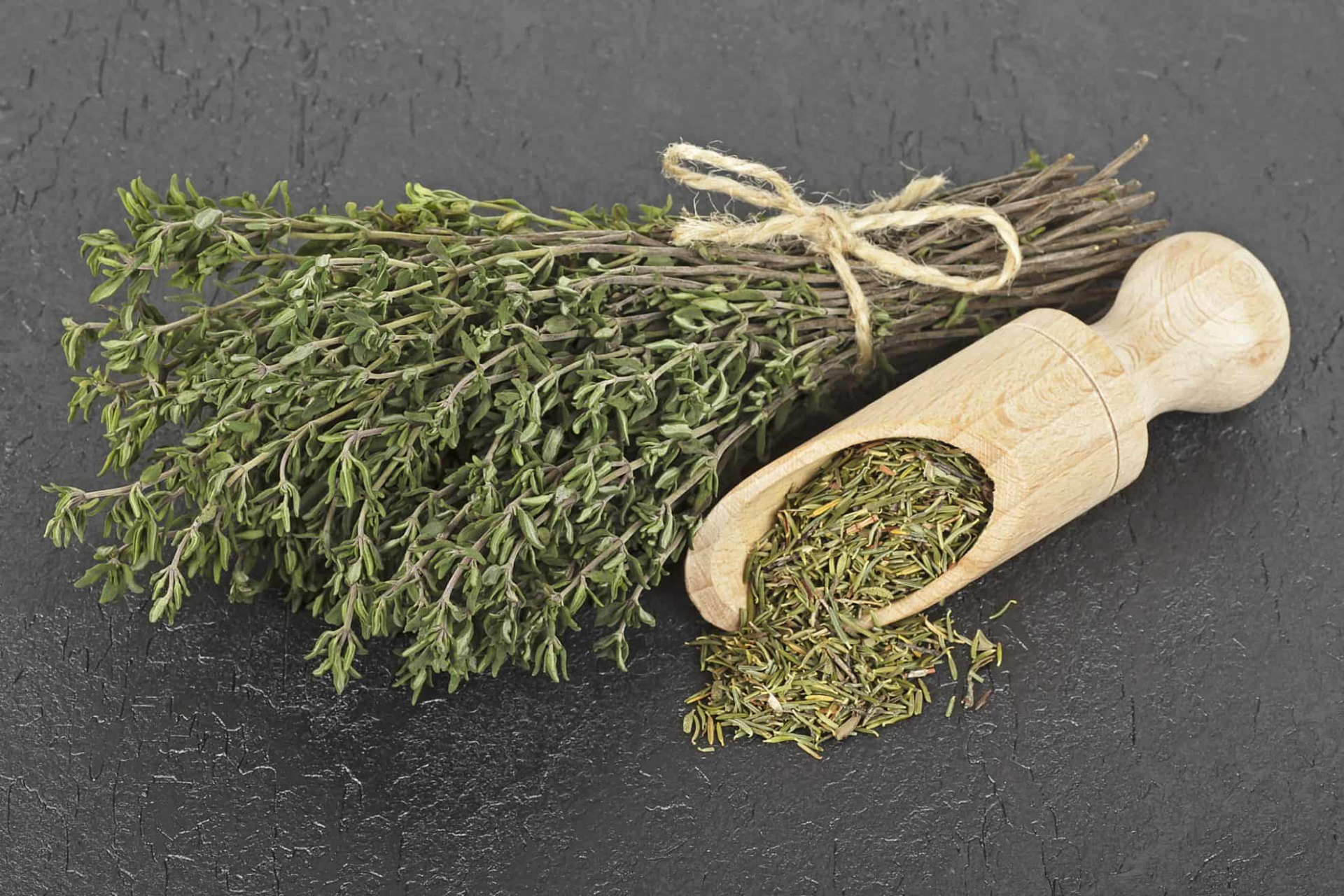 |
| Photo: Savory Experiments |
Thyme (Thymus vulgaris) is a low-growing, woody perennial that performs especially well in somewhat dry, sunny conditions. A beloved Mediterranean herb, it holds its taste in cooking and blends well with other flavors of its native region, such as garlic, olive oil, and tomatoes.
The tiny pink, lavender, or white tubular flowers of thyme plants show up in the spring and summer months and are well-liked by bees. Its tiny gray-green leaves remain evergreen, and most thyme varieties can even be harvested in winter in the zones where it is a perennial.
Thyme can be planted at almost any time. It will mature enough to allow for harvest within a few months, then will reliably return year after year in the climate zones where it is hardy.
BenefitsBronchitis. Some research suggests that taking thyme by mouth, in combination with various other herbs, improves symptoms of bronchitis such as coughing, fever, and increased production of sputum in adults, children, and teenagers. Cough. Some research suggests that taking thyme by mouth, alone or in combination with various other herbs, reduces coughing in people with bronchitis, upper respiratory tract infections, or common colds. |
4. Monstera Deliciosa
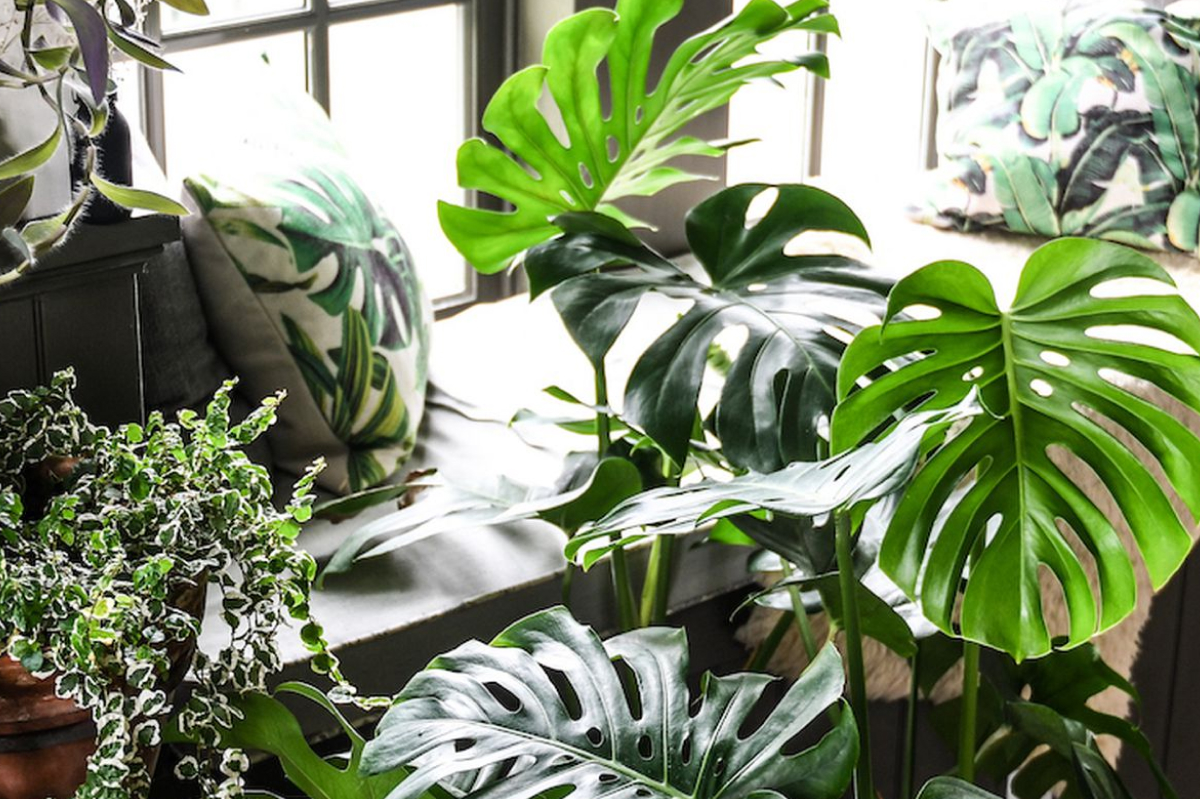 |
| Photo: Monstera Garden |
Monstera are species of evergreen tropical vines and shrubs that are native to Central America. They are famous for their natural leaf-holes, which has led to the rise of their nickname, Swiss Cheese Plant. The Monstera's leaf-holes are called fenestrations and are theorized to maximize sun fleck capture on the forest floor by increasing the spread of the leaf while decreasing the mass of leaf cells to support.
Water every 1-2 weeks, allowing soil to dry out between waterings. Expect to water more often in brighter light and less often in lower light. Pro tip: Monsteras can benefit from filtered water or water left out overnight before using.
Monstera deliciosae improve air quality in three ways:
Their big, textured leaves are covered in tiny pores which take in carbon dioxide and expel oxygen. All plants produce oxygen as they photosynthesise, but the large surface area of Swiss Cheese Plants means they’re especially efficient at doing so.
Large, waxy leaves like this are also mean dust trappers. Debris that would otherwise fall on surfaces and remain airborne will sit on Monstera leaves, where it can be easily wiped away, so both you and your plant can breathe easily!
If you keep your Swiss Cheese Plant lightly misted, once every 5-7 days, it will add humidity to the air, warding off ailments such as dry skin conditions and respiratory problems that are aggravated by dryness.
3. Dracaena Gold Star
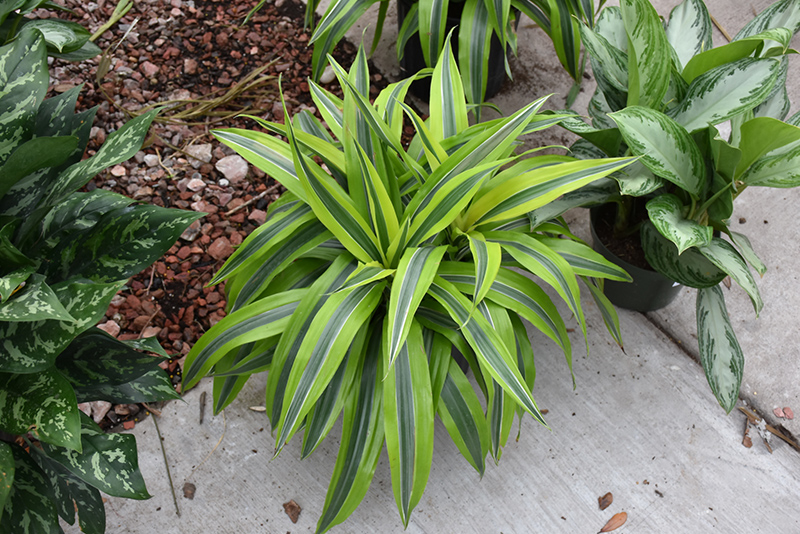 |
| Photo: All Seasons Nusery |
A popular indoor plant that is easy to grow and care for; produces striking blue-green, sword shaped leaves with lime green edges and white stripes; can be used as a tabletop or floor plant; tolerates low light areas
Goldstar Dracaena's attractive glossy sword-like leaves remain bluish-green in color with distinctive lime green edges and tinges of white throughout the year. The flowers are not ornamentally significant. The dark green stems can be quite attractive and add to the plant's interest.
This is an herbaceous evergreen houseplant with an upright spreading habit of growth. Its relatively coarse texture stands it apart from other indoor plants with finer foliage. This plant may benefit from an occasional pruning to look its best.
BenefitsDracaena is one of the most effective houseplants in air purification. It helps remove formaldehyde, benzene, trichloroethylene and carbon dioxide. These are chemicals linked with several health problems among them headaches, respiratory problems, anemia, marrow disease, kidney disease among others. |
2. LemonGrass
 |
| Photo: Getty Images |
Lemongrass grows with abundance in areas where conditions mimic the tropical habitat of their origin. Plants like lots of heat, light, and moisture: Provide this, and your lemongrass will grow and multiply quickly.
Lemongrass plants prefer rich, loamy soil. You can create this ideal soil by adding several different soil amendments: compost, manure, and leaf mold are all enriching additives that you can add at planting time.
BenefitsLemongrass might help prevent the growth of some bacteria and yeast. Lemongrass also contains substances that are thought to relieve pain and swelling, reduce fever, improve levels of sugar and cholesterol in the blood, stimulate the uterus and menstrual flow, and have antioxidant properties. |
1. Queen of Herbs - Krishna Tulsi Plant
From Ayurveda to Unani to Modern medicine, Tulsi and its extracts have been used as an active ingredient in making healing and immunity boosting medicines, but you would be amazed to know that there are several types of Tulsi and not only are these great for immunity but at the same time, they help in losing weight naturally.
Green Tulsi (Holy Basil)
It is one of the most widely available variants of Tulsi also known as Holy Basil, which is revered as one of the most common houseplants. According to religious beliefs, planting Tulsi and worshipping it brings prosperity and happiness in the family. Apart from that, Adding Tulsi to prasad, tea, kadha and other delicacies makes it an essential part of our heritage. There are several types of Holy Basils.
Rama Tulsi
Rama Tulsi also known as Sri Tulasi has healing properties and the taste of this Tulsi is slightly on the sweeter side, with an aromatic aroma. This type of Tulsi is found across the country and is used for religious purposes and medicinal purposes.
Kapoor Tulsi
Kapoor Tulsi is loaded with medicinal properties, its sweet fragrance can keep insects and mosquitoes at bay. Apart from that, this Tulsi variant has been used for curing life threatening diseases.
Vana Tulsi
Vana Tulsi also known as Wild Tulsi is usually cultivated around the Himalayas and has strong aroma, which helps in boosting immunity. Apart from that, it further helps in improving mental as well as physical endurance. Moreover, this variant of Tulsi has anti-aging properties.
Benefits of indoor plants1. Indoor plants may help reduce stress levels A studyTrusted Source published in the Journal of Physiological Anthropology found that plants in your home or office can make you feel more comfortable, soothed, and natural. In the study, participants were given two different tasks: repotting a houseplant or completing a short computer-based task. After each task, researchers measured the biological factors associated with stress, including heart rate and blood pressure. 2. Real plants may sharpen your attention Brain scans of the participants showed that the students who studied with real, live plants in the classroom were more attentive and better able to concentrate than students in the other groups. 3. Plants may help you recover from illness faster A 2002 review of the research revealed that people recuperating from several kinds of surgery needed less pain medication and had shorter hospital stays than people who weren’t looking at greenery during their recovery periods. It’s important to note that most research focuses on plants and natural scenery in hospital settings rather than at home. 4. Plants may boost your productivity Multiple studies have found that plants in the workspace increase both productivity and creativity. One frequently cited study from 1996 found that students in a campus computer lab worked 12 percent faster and were less stressed when plants were placed nearby. In a 2004 studyTrusted Source, researchers challenged people to make creative word associations. They performed better when a plant was in the room with them. |
 Top 10 Most Beautiful Beaches In The UK Top 10 Most Beautiful Beaches In The UK England is a land of beauty, and perfect destination for holidays and relaxation. Here is top 10 most beautiful beaches in the UK. |
 Top 10 Most Beautiful Cities in the UK Top 10 Most Beautiful Cities in the UK England is a beautiful place with many lovely and scenic spots that you can visit. Here is the list of top 10 most beautiful cities ... |
 Top 10 Most Beautiful Lakes In The US Top 10 Most Beautiful Lakes In The US There are hundreds of prettiest lakes in the US spread out over varying geographical backgrounds, and all of them are beyond compare. |
 Top 10 Most Handsome British Men In 2021 Top 10 Most Handsome British Men In 2021 Top 10 most handsome British men have a lot of famous actors. Check out our list! |























